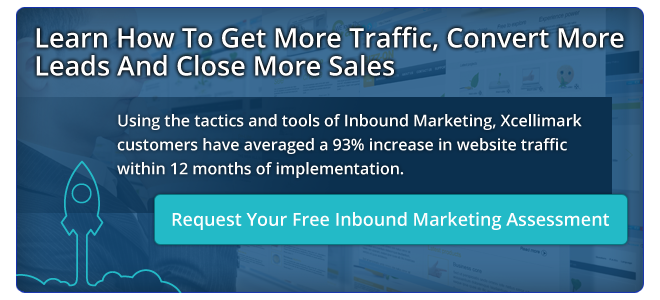Why Your Website Design is Missing the Mark (And How You Can Fix It!)

 How often do you think about Web design? If you're like many business owners, you probably take a "leave it to the experts" approach to this highly visible but seemingly technical aspect of digital marketing.
How often do you think about Web design? If you're like many business owners, you probably take a "leave it to the experts" approach to this highly visible but seemingly technical aspect of digital marketing.
That could be a mistake. Far too many business owners suffer from "mediocre website syndrome," symptoms of which include uninspiring graphics, drab content and frustrating navigation. Worse, many don't even realize that their website design is missing the mark. While they're snoozing, their competitors are cleaning up with inspired website designs that encourage visitor engagement and support highly-qualified lead generation.
These 10 tips offer cost-effective solutions for common website design problems. How many could your website use?
1. Use Engaging, Relevant Graphics
Thanks to faster connection speeds and cheaper, more plentiful file storage, it's easier than ever to create a colorful, image- and video-rich website that doesn't hamper the user experience. In fact, savvy website visitors expect top-notch graphics and design. They also want to see graphics that make sense in the context of your solutions. With this in mind, invest in custom or stock photos that communicate your message and differentiators in an emotional, forthright way. Don't rely on dense text or confusing data charts to do the job.
2. Employ a Consistent Color Scheme, Background and Logo
Pair your attractive website images and videos with a consistent color scheme and background graphics. Follow up with a professional logo that clearly communicates your business. Taken together, these three website design elements are key components of your online brand. Make sure they're consistent across all branded Web properties and outgoing communications, including email marketing materials.
3. Invest in Intuitive Navigation
Intuitive navigation is critical for website visitors as well as the automated search engine "spiders" that map your website on a regular basis. If you have lots of dead-end pages, cluttered navigation buttons or other faulty navigation, visitors are less likely to take the time to figure out how to get from point A to point B on your site. Instead, they'll head over to a better-equipped competitor's site. Likewise, search engine spiders literally don't have time to catalog confusingly laid-out or "orphaned" site pages.
4. Limit Page Clutter
No one likes a cluttered website. Time-pressed visitors aren't likely to read through reams and reams of dense text to figure out what your company can offer them. On main pages and important sub-pages, employ a succinct writing style that makes liberal use of headers and clearly links to subject-specific pages that provide more information about each high-level topic.
5. Use Larger Fonts and Well-spaced Text
The "limit your clutter" principle applies to fonts, text spacing, button placement and other website design elements as well. Don't be afraid to use white space and other "negative" techniques to break up repetitive or busy sections of your website. Your prospects are more likely to engage with easy-on-the-eyes content.
6. Get Down and Dirty with Data
While your visitors and prospects should always be able to understand what you're trying to communicate, that doesn't mean you have to shy away from data completely. There's a time and place for complex charts, detailed case studies and dense infographics. Such content types are particularly useful in the B2B marketing space. Used properly, these design elements position your company as a go-to provider of solutions and ideas in its field.
7. Include a Value Proposition
One of the most important and easy-to-include website design elements is a value proposition that encapsulates your company's key differentiators and compellingly communicates why your prospects should choose you over the competition. Use bold or large-font text and eye-catching graphics to draw attention to your value proposition.
8. Encourage Prospects to Take Action
Pair your value proposition with an effective call-to-action. Use the same design tricks to draw attention to this critical "ask." Depending on the objective of a particular website subpage, you may need to vary the wording and placement of your call to action.
9. Make Attractive, Conversion-Oriented Buttons
Now that social media channels are so critical in the context of inbound marketing and lead generation, your website needs to have social buttons. Likewise, any contact or signup forms that you include on your main page or subpages need to have buttons clearly labeled for visitors to submit or send their contact information to you.
These buttons should have sharp, attractive designs that draw users' attention to them and encourage engagement. If you don't make it clear that you want visitors to request more information or sign up for your email newsletter, they're not going to do it. Worse, they might subsequently do so for a competitor that does a better job of focusing their attention.
10. Keep up with Changing Times
When Bob Dylan first proclaimed that "the times they are a-changin'," he probably didn't have digital marketing in mind. However, the phrase definitely applies to the current online marketing landscape. Driven by frequent search algorithm changes and an increasingly time-pressed, marketing-savvy consumer base, companies are scrambling to keep their website design practices in line with their prospects' expectations.
In this environment, educated business owners are successful business owners. If you can devote a couple of hours per week to high-level information-gathering about current and on-the-horizon Web trends, you'll be leagues ahead of competitors who aren't able to muster that time.
Learn How to Make a Great Website
Fortunately, these website design tips combine to create a cost-effective road map for a much-improved Web presence. If you can follow even a few of these website improvement tips, you'll find yourself in a much better position to attract website visitors and get them to "stick" on your site. For more tips and tricks on improving your website, sign-up for our Inbound Marketing Assessment.








